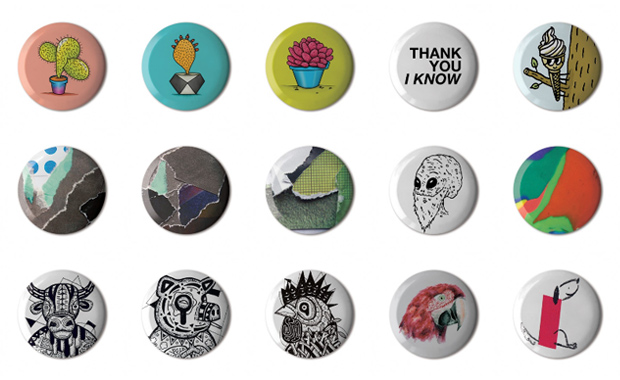Mistakes to Avoid When Crafting Foil Characters: Common Missteps
Creating compelling and multi-dimensional characters is a key element of successful storytelling. Incorporating foil characters is an effective way to add depth and complexity to your characters. A foil character is someone who contrasts with another character, highlighting their differences and enhancing the reader’s understanding of both. While crafting foil characters can be a powerful tool, it’s not without its challenges. In this blog post, we’ll explore common mistakes to avoid when creating foil characters, ensuring that your storytelling remains engaging and impactful.
Neglecting Character Development
One of the most significant mistakes when crafting foil characters is neglecting their development. Foil characters should not be one-dimensional stereotypes or cardboard cutouts. They deserve just as much attention and depth as your primary characters. Here’s how to avoid this pitfall:
- Step 1: Give Them a Backstory: Develop a detailed backstory for your foil characters. Understand their history, motivations, and experiences that have shaped them.
- Step 2: Unique Personalities: Ensure your foil characters have unique personalities and traits that set them apart from the main character. This contrast will make their interactions more compelling.
- Step 3: Growth and Change: Allow your foil characters to evolve throughout the story. They should experience personal growth and change, just like the main characters.
Creating Obvious Foils
Another common mistake is creating foil characters that are too obvious. While some contrast is essential, making the foil characters too predictable can lead to a lack of depth and surprise in your narrative. Here’s how to avoid this pitfall:
- Subtle Contrasts: Instead of making the differences between your main character and foil character glaringly obvious, opt for subtler contrasts. These nuances can be more intriguing for readers.
- Shared Traits: Highlight shared traits and similarities between your characters as well. This can create a more intricate dynamic where the characters unexpectedly reflect each other.
Lack of Character Agency
Foil characters should not merely exist to serve the main character’s storyline. They should have their own agency and motivations that drive the plot forward. Avoid the mistake of relegating your foil characters to passive roles:
- Independent Goals: Give your foil characters their own goals and desires. These goals can intersect with or diverge from the main character’s objectives.
- Conflict and Collaboration: Allow for moments of conflict and collaboration between the main character and the foil character. This can lead to dynamic and engaging interactions.
Overemphasizing Stereotypes
Crafting foil characters based solely on stereotypes can lead to shallow and unoriginal storytelling. Avoid this mistake by delving deeper into your characters’ complexities:
- Avoid Clichés: Steer clear of clichéd character traits and backgrounds. Challenge stereotypes and explore unique facets of your foil characters.
- Humanizing Flaws: Make sure your foil characters have flaws and vulnerabilities, just like real people. These imperfections can make them more relatable and interesting.
Neglecting Character Arcs
Character arcs are essential for both main characters and foil characters. A common misstep is neglecting the development of foil characters’ arcs. Here’s how to avoid this:
- Arc Progression: Plan and track the progression of your foil characters’ arcs. Ensure that they experience growth, change, and development throughout the story.
- Parallel Journeys: Consider how the foil character’s journey parallels or contrasts with the main character’s journey. This can create depth and resonance in your storytelling.
Forgetting About Motivations
Understanding your characters’ motivations is crucial for crafting a compelling narrative. Foil characters should have clear and believable motivations that drive their actions. Avoid this mistake by:
- Motivation Alignment: Ensure that your foil characters’ motivations align with their actions and decisions. Inconsistencies can lead to reader confusion.
- Inner Conflicts: Explore the internal conflicts and dilemmas that your foil characters face due to their motivations. This adds complexity to their characterizations.
Ignoring Emotional Depth
Foil characters are not exempt from experiencing emotions. Failing to delve into their emotional depth can make them feel robotic and unrelatable. Here’s how to bring emotional depth to your foil characters:
- Emotional Reactions: Show how your foil characters react emotionally to events and interactions. Let readers connect with their feelings and experiences.
- Vulnerability: Allow your foil characters to express vulnerability and reveal their inner thoughts and fears. This humanizes them and makes them more relatable.
Focusing Solely on Contrast
While contrast is a vital element of foil characters, it’s not the sole purpose. Overemphasizing contrast can lead to one-dimensional characters. To avoid this, consider the following:
- Complementary Qualities: Explore how the foil character’s qualities complement the main character’s, contributing positively to the story’s development.
- Shared Growth: Allow both the main character and foil character to grow and learn from each other. This can result in a more satisfying narrative arc.
Mistakes to Avoid Crafting Foil Characters: Conclusion
Crafting foil characters is a nuanced and rewarding aspect of storytelling. By avoiding these common mistakes, you can ensure that your foil characters are well-developed, emotionally resonant, and contribute meaningfully to your narrative. Remember to give them depth, agency, and relatability while avoiding clichés and stereotypes. When done right, foil characters can enrich your story and captivate your readers, adding layers of complexity to your narrative that make it truly unforgettable.





















